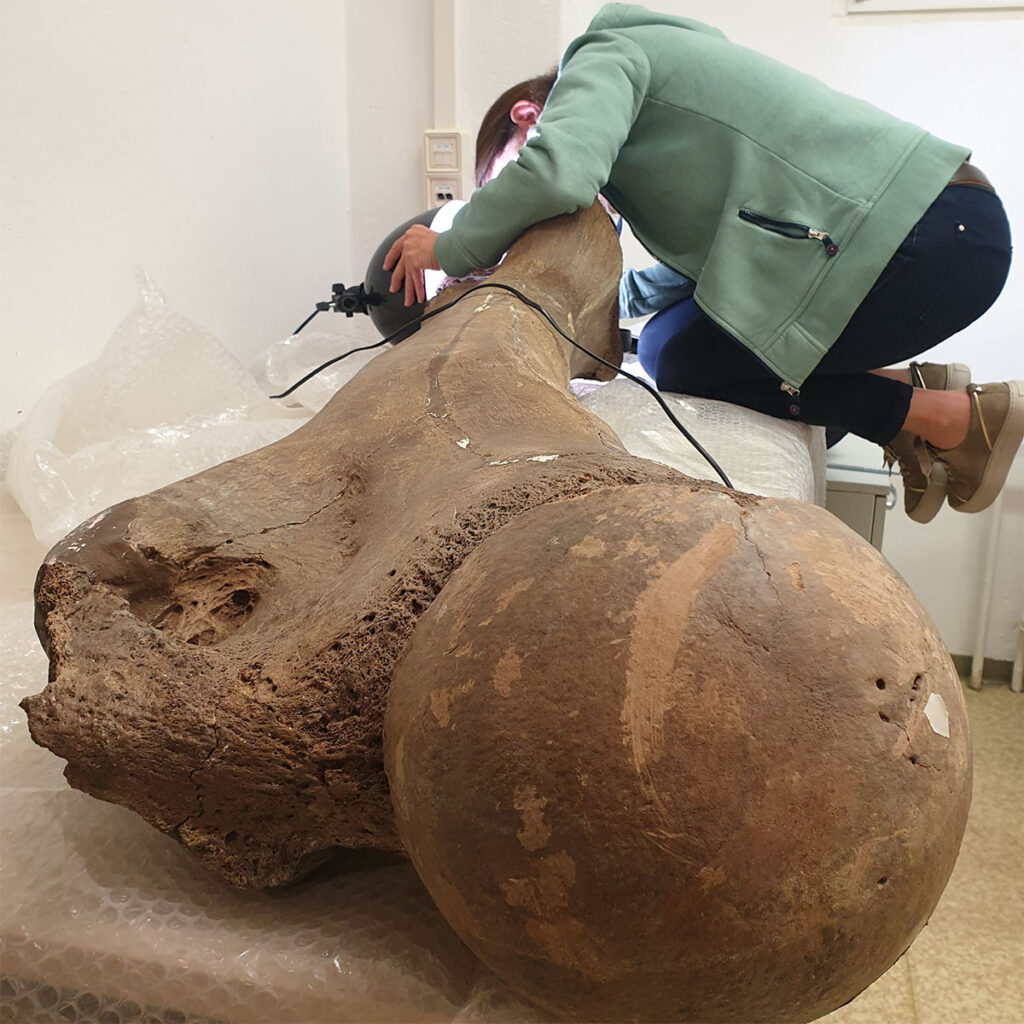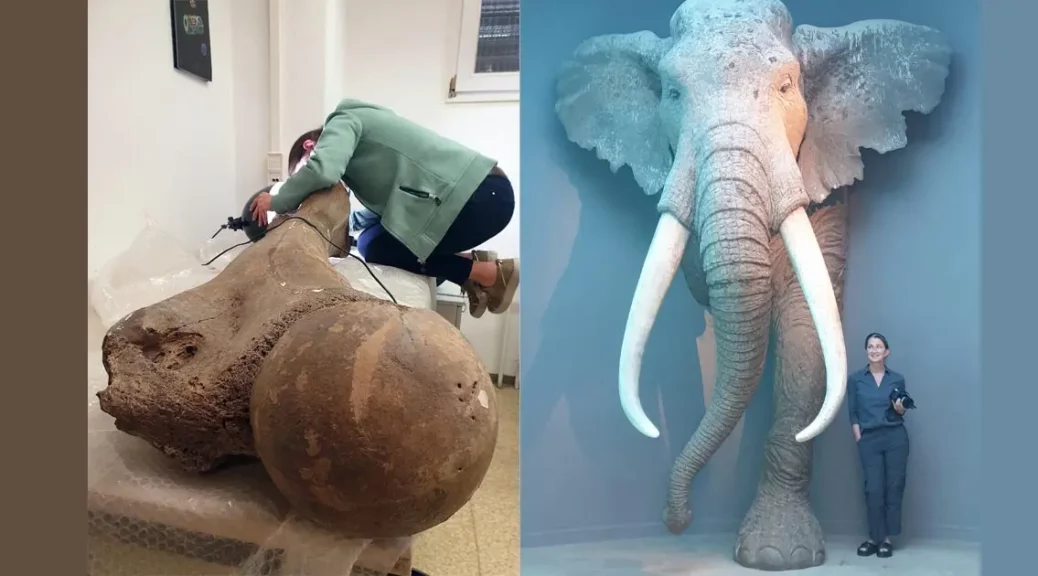Elephant Bones Suggest Neanderthals Gathered in Large Groups

On the muddy shores of a lake in east-central Germany, Neanderthals gathered some 125,000 years ago to butcher massive elephants. With sharp stone tools, they harvested up to 4 tons of flesh from each animal, according to a new study that is casting these ancient human relatives in a new light.
The degree of organization required to carry out the butchery—and the sheer quantity of food it provided—suggests Neanderthals could form much larger social groups than previously thought.
The find comes from a trove of animal bones and stone tools uncovered in the 1980s by coal miners near the town of Neumark-Nord. Beginning in 1985, archaeologists spent a decade observing the mining work, recovering animal bones and stone tools from a sprawling site.
Dating to a relatively warm period in Europe known as the Eemian interglacial, 75,000 years before modern humans arrived in Western Europe, the discoveries include the bones and tusks of more than 70 mostly adult male straight-tusked elephants (Palaeoloxodon antiquus), an extinct species almost twice the size of modern African elephants that stood nearly 4 meters tall at the shoulder. Most had been left in dozens of piles along the ancient lakeshore over the course of about 300 years.
“We wondered, ‘What the hell are 70 elephants doing there?’” says Lutz Kindler, an archaeozoologist at the MONREPOS Archaeological Research Center.
To find out, he and his colleague Sabine Gaudzinski-Windheuser, also an archaeozoologist at MONREPOS, spent months examining the 3400 elephant bones, which are now stored in a warehouse. Some weighed dozens of kilograms and required a forklift to move. Under a microscope, Gaudzinski-Windheuser says, nearly every bone showed signs of butchery.
Although scientists have long known Neanderthals were capable hunters, these cutmarks “seem to be the first evidence of large-scale elephant hunting,” says April Nowell, an archaeologist at the University of Victoria who was not involved with the research.
Gouges and scratches on nearly every bone show the hunters were thorough. “They really went for every scrap of meat and fat,” says University of Leiden archaeologist and study co-author Wil Roebroeks. The bones hadn’t been gnawed by scavengers like wolves or hyenas, suggesting nothing was left for them.
The meat from a single elephant would have been enough to feed 350 people for a week, or 100 people for a month, the researchers calculate. In the past, Neanderthals were thought to live in small, highly mobile groups of about 20 individuals at most, but the elephant bounty suggests far bigger groups—big enough to slaughter and process an entire elephant and big enough to consume it—once lived near the site, the researchers report today in Science Advances.
“This is really hard and time-consuming work,” Kindler says. “Why would you slaughter the whole elephant if you’re going to waste half the portions?”

The elephants provided ideal samples for this work, the authors noted. At ancient sites featuring hundreds of slaughtered horses or gazelle, there’s no way to know for sure whether all the animals were killed at the same time. “If you find 100 butchered horses, you don’t know if it was one event or 20,” Roebroeks says. “With an elephant, it’s clear Neanderthals were able to deal with a huge amount of food in one go.”
The researchers “make a good case these huge food packages mean much larger groups,” says University of Reading archaeologist Annemieke Milks, who was not involved in the research. “Maybe it’s a large, seasonal gathering, or they’re storing food—or both.”
Nowell agrees, adding that felling an elephant must have required careful orchestration. The hunters likely singled out adult males, which roam alone without the protection of a female-led herd. “It would necessitate a high level of competence in sequencing and planning out the hunt and coordinating everybody.”
That doesn’t mean Neanderthals always lived and worked in large groups. But the results, like other recent findings, show these human ancestors were more sophisticated than once assumed, capable of adapting their behavior to a wide variety of environments and climates. “If one regional group of Neanderthals was capable of such behavior, other groups elsewhere surely would have been capable, too,” says retired University of Nevada, Reno, archaeologist Gary Haynes. “This lets us imagine Neanderthals as more like modern humans rather than as humanoid brutes, as they once were interpreted.”
